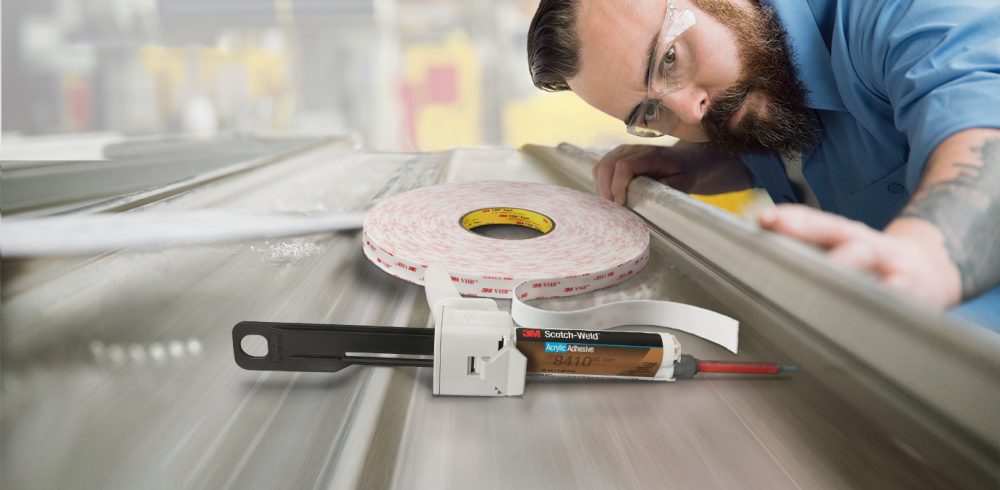The European Commission has set targets to reduce CO2 emissions in vehicles by 30% by 2030. Vehicle weight has a direct impact on fuel consumption and therefore CO2 emissions. As a result, manufacturers are searching for ways to reduce weight while still maintaining safety and performance, according to Antonio Pagliuca, senior technical specialist adhesives for 3M’s Automotive and Aerospace Division.
Stringent emissions targets are putting automotive companies under pressure to improve fuel efficiency. Car manufacturers are looking at new technologies to help improve engine performance, to create a sleeker, more aerodynamic body and to build lightweight vehicles.
Design engineers can choose from a range of materials such as advanced metals, engineering plastics and composites. The optimum way to use these materials is to combine them into a hybrid structure, using the most suitable material for each application. While this approach maximises the advantage of each material, it presents a problem of how to fix them together without affecting the structural integrity or strength of each material. Usually, the use of rivets and fasteners are the tools of choice, however, these add unnecessary weight back into the vehicle, and can weaken certain materials such as carbon fibre reinforced plastic (CFRP).
One solution is to use adhesive bonds to assemble these mixed materials together. Adhesive popularity has increased over the years for two reasons: it is better suited to connect different materials together and of course, it is dramatically lighter. Adhesive bonds also prevent galvanic corrosion between dissimilar metals, provides a cleaner look of bonded joints and a more efficient production line as it negates extra finishing work. A further benefit is that stress is distributed evenly across the material whereas rivets and spot welding create stress concentrations which can lead to weak spots in the material and premature failure. Heat and friction welding are energy and tooling intensive and have limitations in the possible geometries and substrate combinations.
Complex combinations
Some areas of a car, such as crumple zones, require greater strength. The energy implications of different material and adhesive combinations must be understood. Extensive testing exploring the adhesion, mechanical and thermo-mechanical properties of the adhesive and substrate concerned, allow bonding performance to be defined clearly.
However, the figures produced apply only to the specified combination of adhesive product, materials, joint geometry and test conditions. Many combinations may have to be tested to find the ideal solution, especially in multi-material structures. To understand how the structure will behave in its intended application, it must be tested under real-life conditions. Vibration – or cyclic loading – extreme temperature variation, water immersion and salt spray are examples of the fatigue factors it may face.
These varying factors can be combined synergistically by 3M’s bespoke fatigue test equipment to generate data to help predict life cycle performance. This gives designers the feedback and confidence they need to take informed decisions. Companies such as 3M are constantly evolving their test methodology for assessing fatigue performance of bonded joints in multi-material structures.
There are different types of adhesives available that allow engineers to create stiff and crash-worthy structures across a wide range of materials; examples including CFRP to aluminium and high strength steels.
Over the next ten years, adhesive bonding will play a vital role in reducing vehicle weight and, therefore, cutting down on CO2 emissions and overall costs. The extra weight saving also means that manufacturers can add in consumer benefits such as increased safety features, giving them a true market advantage.















